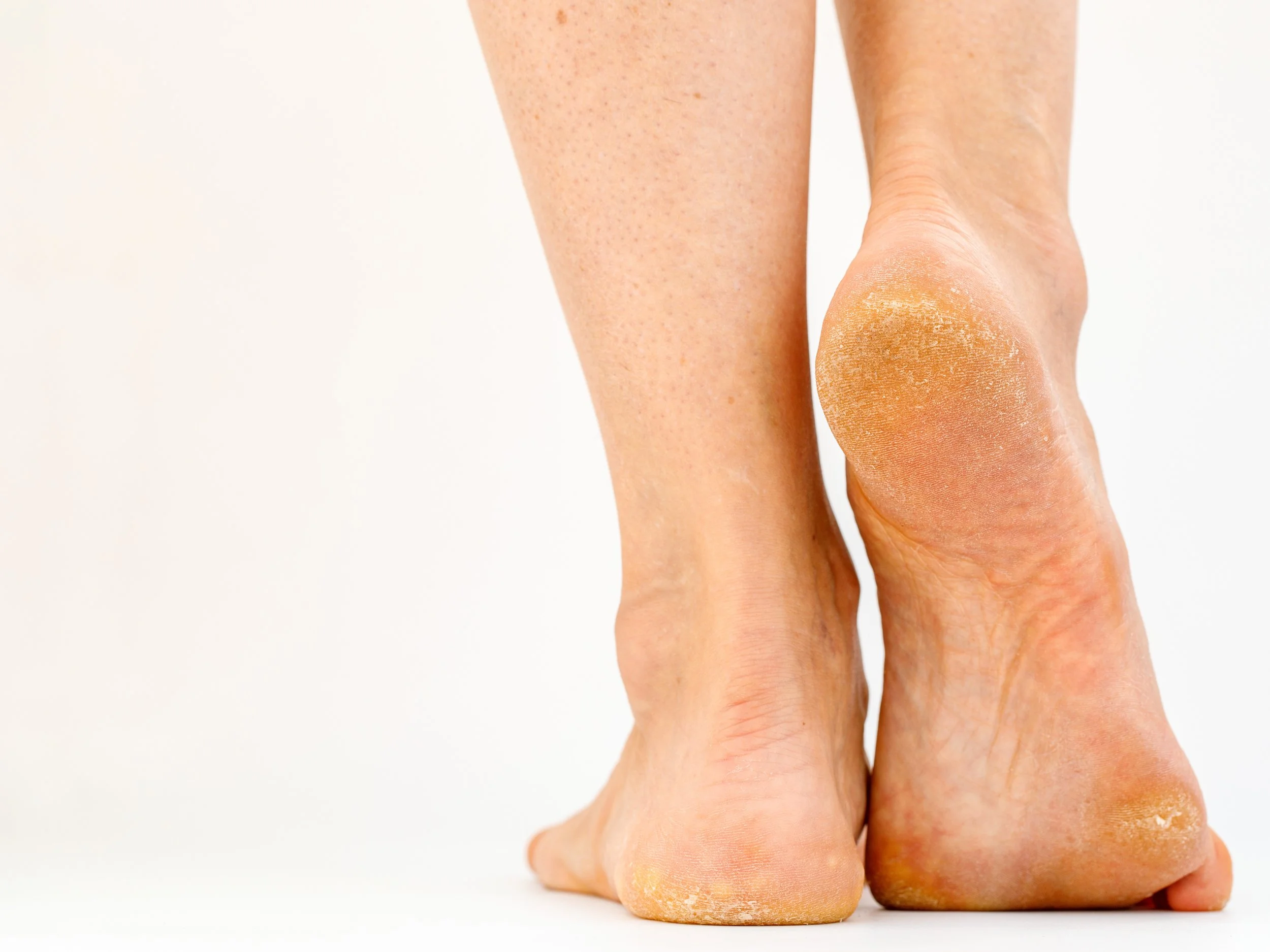Understanding Hyperkeratosis: What It Means for Your Feet
What is hyperkeratosis?
Hyperkeratosis is the medical term for the thickening of the skin’s outer layer (stratum corneum) due to an increase in keratin — the protective protein in skin, hair, and nails. In the feet, this thickened skin often develops as a natural defence against pressure or friction.
In podiatry, the most common types we see are:
Calluses – broad, even areas of thickened skin, often under the ball of the foot or heel
Corns – more focused, cone-shaped areas of hard skin, which can press into the deeper layers and cause pain
Why does it happen?
Hyperkeratosis is your body’s way of protecting itself from repeated stress or irritation. Common causes include:
Ill-fitting footwear (too tight, too loose, or high heels)
Abnormal foot mechanics (e.g. flat feet, high arches, or gait imbalances)
High levels of activity, such as running, hiking, or sports
Loss of natural padding in the feet with age
Certain skin conditions or systemic health issues
Is hyperkeratosis harmful?
In mild cases, it’s more of a cosmetic concern. However, if left untreated, thickened skin can:
Become painful
Crack, leading to infection
Mask underlying ulcers — particularly important for people with diabetes or poor circulation
How is it treated?
As a podiatrist, my approach is both treatment and prevention:
Professional debridement – safely reducing the hard skin in clinic using sterile instruments, immediately improving comfort
Footwear assessment – recommending shoes that reduce pressure and friction
Orthotic support – addressing biomechanical causes to prevent recurrence
Skin care advice – recommending emollients to keep the skin supple and slow down thickening
Can I manage it at home?
You can help by:
Moisturising your feet daily with a urea-based cream
Wearing well-fitted, supportive footwear
Avoiding bathroom “shaving” blades or sharp tools (these increase the risk of injury and infection)
Using a gentle foot file once or twice a week after bathing
When to seek professional help
If you have persistent hard skin, pain, or any signs of infection, or if you have diabetes or circulation problems, you should book a podiatry appointment.
At Bailey Podiatry & Reflexology, we’ll not only remove discomfort but help you understand why hyperkeratosis has developed — so together, we can stop it from coming back.
📞 Call us on 016977 2191
💻 Book online: https://www.baileypodiatry.co.uk/book
Bailey Podiatry & Reflexology
Supporting your foot health – and your whole wellbeing
#BaileyPodiatry #BramptonCumbria #CumbriaClinic #FootCareBrampton #FootHealthMatters #HealthyFeetHappyLife #PodiatryUK #FootCareSpecialist #DidYouKnow #FeetFirstCare #AskYourPodiatrist #Hyperkeratosis #CallusRemoval #CornTreatment #FootHealthCumbria #ProfessionalPodiatry

